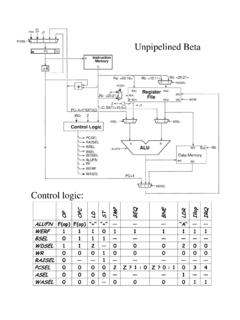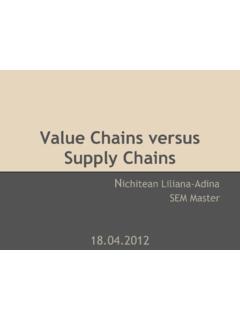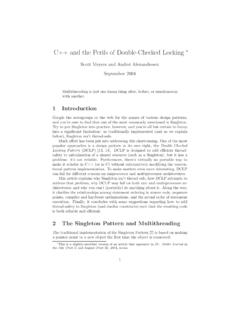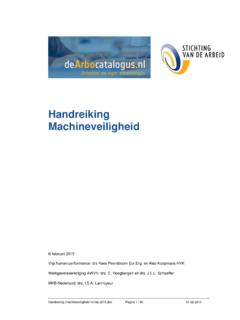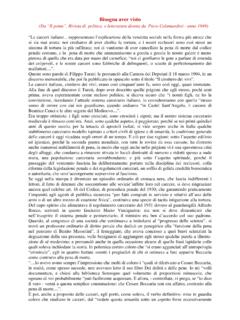Transcription of Logic Soft Errors in Sub-65nm Technologies Design …
1 2 Logic Soft Errors in Sub-65nm Technologies Design and CAD challenges Subhasish Mitra Intel Corporation Tanay Karnik Intel Corporation Norbert Seifert Intel Corporation Ming Zhang Intel Corporation ABSTRACT Logic soft Errors are radiation induced transient Errors in sequential elements (flip-flops and latches) and combinational Logic . Robust enterprise platforms in Sub-65nm Technologies require designs with built-in Logic soft error protection. Effective Logic soft error protection requires solutions to the following three problems: (1) Accurate soft error rate estimation for combinational Logic networks; (2) Automated estimation of system effects of Logic soft Errors , and identification of regions in a Design that must be protected; and, (3) New cost-effective techniques for Logic soft error protection, because classical fault-tolerance techniques are very expensive.
2 Categories and Subject Descriptors [Performance and Reliability]: Reliability, Testing and fault-tolerance. General Terms Design , Reliability. Keywords Architectural Vulnerability Factor, Built-In Soft Error Resilience, derating, error blocking, error detection, recovery, soft error. 1. INTRODUCTION Logic soft Errors affect sequential elements (latches and flip-flops) and combinational Logic . Most of these Errors do not have any impact on system operation [1, 2]. For example, an error in a flip-flop whose output is AND-ed with another signal with Logic value 0 has no effect on the system. As another example, an error in an operand of a speculatively executed instruction which is finally not committed (and becomes a dead instruction) does not impact system operation.
3 However, a significant percentage of Logic soft Errors can result in data corruption without the system or the user knowing about it. As a result, system data integrity is severely compromised. For example, consider the effect of a 1 0 bit flip in the most significant bit of the register storing the amount of money deposited into a bank account. This is referred to as an undetected error or silent data corruption, and is of great concern. Logic soft Errors are very significant contributors to system-level silent data corruption for designs manufactured in advanced Technologies (90nm, 65nm, onward) and targeted for enterprise computing and communications applications [3, 18].
4 Given the undetected soft error rate requirements of such applications, soft error protection of sequential elements (latches and flip-flops) requires immediate attention. Design and CAD challenges for effective Logic soft error control are discussed below. Automated Estimation of Soft-Error Susceptibility of Combinational Logic Automated estimation of soft error rates of SRAM cells, latches and flip-flops from pre-layout or post-layout circuit structures is now well-understood [16]. In contrast, more research is required in automating soft error rate estimation of combinational Logic .
5 Radiation can cause a Logic hazard at any gate output of a combinational circuit. The hazard may propagate through the combinational Logic and Errors may or may not get latched by the sequential elements depending on the following factors [14]. Logical masking: The hazard may not propagate because there may not be any sensitized path from the node where the strike happened to any output of the combinational Logic circuit. Temporal masking: As the hazard propagates towards a sequential element, the noise on the data input node of the sequential element may be outside of its latching window.
6 Hence the error will not be latched and there will be no soft error. Electrical masking: Since all CMOS circuits have limited bandwidths, hazards with bandwidths greater than the cut-off frequency will be attenuated. The amplitude of the hazard pulse may reduce, the rise and fall times increase, and eventually the hazard pulse may disappear. However, since most Logic gates are nonlinear circuits with a substantial voltage gain, low-frequency pulses with sufficient initial amplitude will be amplified. Techniques that account for temporal and electrical masking of soft Errors are discussed in [17, 19].
7 Automated Estimation of System-level Effects of Logic Soft Errors Not all soft Errors cause silent data corruption. Moreover, as indicated in several publications, not all portions of a Design are equally likely to cause silent data corruption when affected by soft Errors . Automated techniques are required to estimate the probability that a soft error in a Design results in silent data corruption, given that the soft error event has occurred. This problem is also referred to as the Architectural Vulnerability Factor (AVF) or Logic derating estimation. Two major simulation-based AVF estimation approaches that are currently being used in a limited way are fault simulation (also Permission to make digital or hard copies of all or part of this work for personal or classroom use is granted without fee provided that copies are not made or distributed for profit or commercial advantage and that copies bear this notice and the full citation on the first page.)
8 To copy otherwise, or republish, to post on servers or to redistribute to lists, requires prior specific permission and/or a fee. DAC 2005, June 13 17, 2005, Anaheim, California, USA. Copyright 2005 ACM 1-59593-058-2/05 $ 3called fault injection) [2, 4 and several others], and fault-free simulation [1, 5]. There are several open questions and challenges that must be resolved for these techniques to reach their full potential [3]. These are related to the scalability of these techniques for large designs, execution times of these techniques, accuracy of estimation, and applicability to general designs (and not limited to special designs such as microprocessors).
9 Like any simulation approach, the accuracy of AVF estimation depends on the simulated input stimuli. For microprocessors, benchmarks originally intended for performance evaluation are often used for AVF computation. The absence of such benchmarks for other designs ( , network processors and routers) have led the designers to rely on verification traces for AVF estimation. Since the original objectives of all these stimuli are different from system reliability evaluation, it is questionable whether these are sufficient for AVF estimation. New specialized benchmarks for system reliability evaluation are required.
10 Effective Logic Soft Error Protection Techniques We already discussed that sequential elements (latches and flip-flops) require soft error protection for several designs in advanced Technologies . It is needless to say that the major factors that determine the effectiveness of any soft error protection technique are: (1) the amount of soft error protection obtained, and, (2) corresponding power, performance and area overheads. Since all regions of a Design do not have the same architectural vulnerability factors, CAD tools are required for optimized insertion of protection techniques that maximize the amount of soft error protection while incurring minimal overheads.
